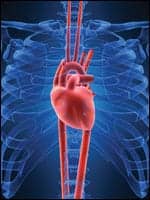By Aine Cryts
What do the surgeons caring for the Minnesota Vikings and the surgeons treating the Green Bay Packers have in common? They both use the Carestream OnSight 3D Extremity System, which uses cone-beam CT technology to provide 3D images at the point of care.
Carestream started shipping the OnSight system in the first quarter of 2017. That’s when the company secured FDA approval for the system and had the CE mark for use in the European Economic Area. According to Helen Titus, global marketing director at Carestream Health, the OnSight system is in use in more than 10 countries around the world.
AXIS Imaging News recently talked to Titus about the Onsight 3D Extremity System. What follows is a lightly edited version of that conversation.
AXIS Imaging News: What are the top challenges you’re trying to help radiologists and healthcare facilities solve with the Onsight 3D Extremity System?
Helen Titus: We’re helping radiologists and orthopedic surgeons diagnose and treat injuries and abnormalities of the upper and lower extremities, such as occult fractures. We’re also helping radiologists and orthopedic surgeons assess the healing and fusion of fractures. This allows the doctor to better determine when the patient can return to their sport or to work. With access to high-resolution 3D images, the surgeon can plan the surgery prior to getting into the operating room; that means they’re prepared with the best surgical approach.
The ability to capture 3D weight-bearing exams accentuates the area of potential instability and helps surgeons recognize areas of joint separation. This is particularly important with ankle and mid-foot ligament injuries of athletes, which can be very subtle. If these conditions are missed, the patient could experience very rapid deterioration of the joint.
AXIS: How does the simplified user interface help radiologic technologists?
Titus: The OnSight system is convenient to use for both the patient and the technologist. The wide door opening provides easy patient access and a scan is complete in 25 seconds. The technologist selects the exam to be performed via a worklist from the RIS and the system auto-positions to the correct configuration.
The exposure technique is pre-programmed. Once the technologist positions the patient, they can press the “expose” button. The workflow is similar to a 2D X-ray room. When the image is acquired, the patient can be released and the system reconstructs the entire 3D volume.
AXIS: How does the ability to share 3D images with patients impact their care?
Titus: 3D images and surface-volume analysis helps patients understand their injury. Clinicians can show them the whole 3D image of the joint at once, instead of in 2D slices. In addition, the 3D image can be rotated, which allows the patient to see the joint from every side. This feature is helpful when educating patients. “It reveals the truth,” says one prominent orthopedic surgeon. The same surgeon says, “This tool shows patients the extent of their injury and how I’m going to treat it.”
AXIS: Who’s using the OnSight system?
Titus: The system is being used in private orthopedic practices and hospitals with large orthopedic departments or outpatient facilities. Examples of these facilities include Twin Cities Orthopedics (surgeons for the Minnesota Vikings) in Golden Valley, Minn., and Bellin Health Titletown Sports Medicine and Orthopedics (surgeons for the Green Bay Packers) in Wisconsin. These healthcare organizations recognize the benefit of weight-bearing CT exams for the athletes they treat.
Northwestern Hospital in Chicago, University of Rochester Medical Center in New York, and Cedars-Sinai Medical Center in Los Angeles are among the hospitals with the system installed.
This modality is in the early-adopter stage and the market is still being educated on the value of weight-bearing and point-of-care CT imaging. The total number of installations in the United States for these types of systems is fewer than 200; that includes all extremity systems, even from vendors other than Carestream.
AXIS: What does the future hold for the OnSight system?
Titus: Carestream will continue to innovate in our software and image processing. We have metal artifact reduction software that allows radiologists to get a clear image, even when patients have metal implants, screws, and rods. In addition, measurements are important in the world of orthopedics; today, these measurements are performed in 2D. There’s an entire field that’s open for automatic 3D measurements.






